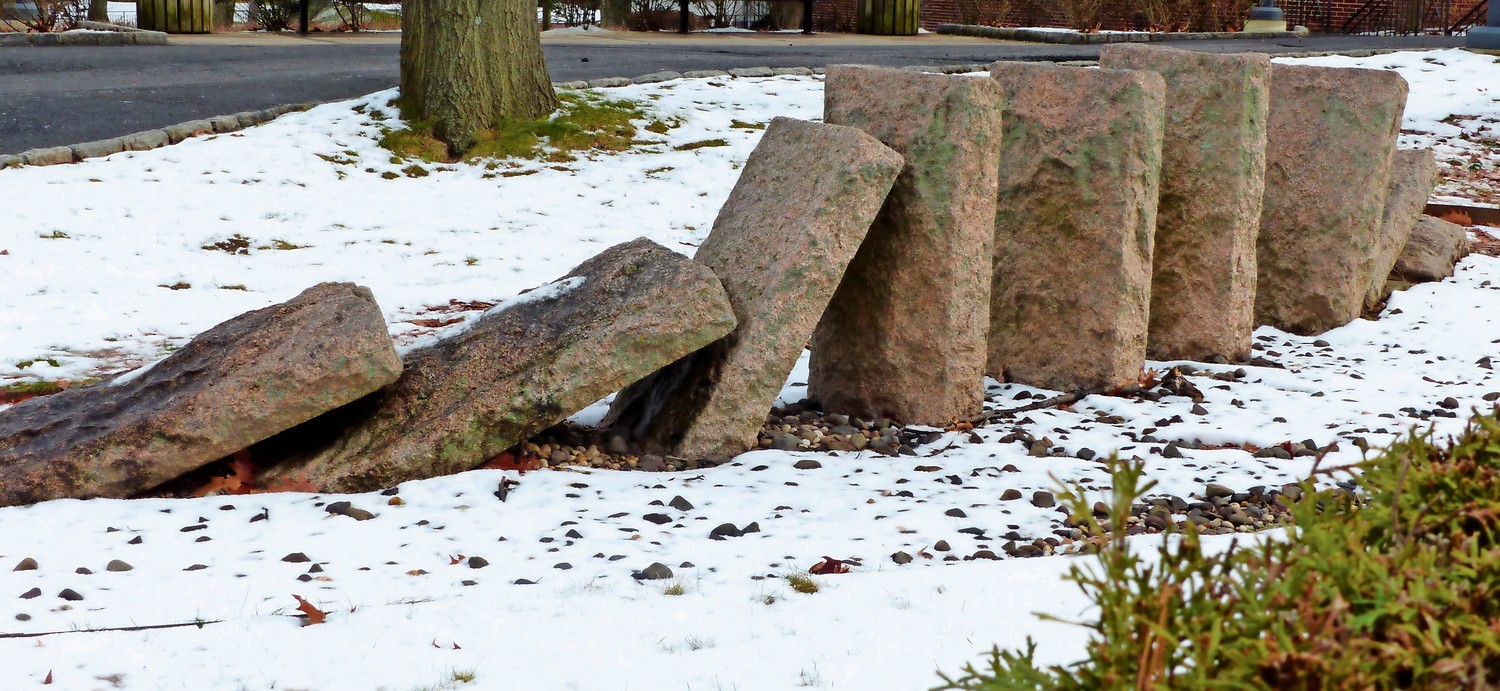Turning nature into art, that’s Andy Goldsworthy
I no longer remember where and when I first became aware of Andy Goldsworthy and his incredible presence and contributions to environmental art. Regardless, I have been hooked for years and have many of his books in my library, including “Stone,” “Time,” “Passage” and “Andy Goldsworthy: A Collaboration With Time.”
Glancing through the December catalog of the Museum of Jewish Heritage, I chanced to see a notice for an upcoming “Conversation with Andy Goldsworthy.” Though a ghastly cold night, we bundled up, braved downtown rush-hour traffic, and got there on time for this live discussion between Goldsworthy and Molly Donovan, the contemporary art curator at the National Gallery of Art in Washington, D.C.
While the discussion was wide-ranging, the slides and much of the conversation centered around the work found in Goldsworthy’s new book “Projects,” chronicling works created around the world over the past decade.
To understand Goldsworthy’s art, you have to focus on the interplay between familiar natural materials and time. He uses stone of various sizes, sheets of ice, huge icicles, leaves that can be artfully strewn about or stitched together with thorns, and twisty branches cut down later into variable lengths. Fresh, wet mud is used to coat objects, and the crackling pattern produced on drying are design elements.
Sometimes an entire dead tree is incorporated into a project. Basically any material found outdoors can be used for installations, limited only by Goldsworthy’s originality. But how does time figure into the equation?
Goldsworthy makes a serious distinction between what he calls projects and what he calls ephemeral work.
“Projects could be defined by their longevity,” is something we expect from art installations. Whatever material is used, the expectation is that the piece will look the same forever, and could last that long as well.
One of his early signature pieces were cairns. Goldsworthy’s cairns resemble giant pinecones and are constructed as stacked layers of relatively flat stones. Cairn comes from Scotch Gaelic meaning “simply a heap of stones.”
Ephemeral works are just that. They are built and photographed during a narrow window of time. While most cairns are permanent, in 2001, Goldsworthy built a cairn at Pigeon Point on Half Moon Bay in California which was intended to be an ephemeral work.
The cairn was built quickly on the sandy beach between high tides. The real interest was in watching and photographing the interaction of the cairn and the water as the cairn completely fell apart. The scene was in constant flux as the tide advanced and the water lapped around the cairn, ever higher until the cairn was totally submerged.
Eventually, the tide won. The cairn was not built to last, and it fell apart completely due to the water’s action. But the photographs make an interesting series.
While this effort can seem perplexing, think of it as a way of understanding the effect of time and the elements on historical objects such as the Sphinx.
My first experience with Goldsworthy’s ephemeral works, found us at the Storm King Art Center in New Windsor, was with a perplexing series of photographs. A group of people are standing on a beach, each holding a slender rod.
The meaning was elusive, until I figured out the viewing order. When examined in the correct order, we could suddenly see the sequence of shapes formed by the rods in the air as the group simultaneously threw their branches upward and Goldsworthy photographically tracked their flight upward and then downward, capturing the pattern at each moment.
Since gravity controls the moment, these photographs froze the events for us that were too fast for our eyes and brains to follow.
Several days ago, I was walking past Riverdale Country School on Fieldston Road and noticed a series of nine stone dominoes, each about two feet high. The center three were upright, and there were two groups of three on either side, leaning toward the center pieces. To me, the piece screamed “Andy Goldsworthy,” and I inquired about the artist.
Satish Joshi lives in Yonkers, and the piece I saw was named “Defiance.” Coming to the United Sates in 1969 with an master’s degree in painting and printmaking from the New Delhi College of Art, Joshi eventually ended up at Riverdale Country School where he headed the visual arts department for more than 30 years. He had the enthusiasm and dedication to both learn and teach an extraordinary range of other artistic areas, including ceramics, sculpture and metal working at the school.
You can view one of the Goldsworthy cairns at SUNY Purchase and a stone wall at Storm King Art Center. Or you can see Joshi’s “Defiance” right here in Riverdale!
Have a thought or comment for Sura Jeselsohn? Email her at greenscenesura@gmail.com.






